ZStack Cloud Platform
Single Server Deployment with Full Features, Free for One Year
Recently, ZStack Cloud version 5.3.40 was officially released, driving enterprise cloud platform performance with innovative technology! This update focuses on core scenarios of cloud infrastructure, featuring four major upgrades to help users build more stable, flexible, and high-performance cloud environments.
This article will introduce several significant updates brought by the ZStack Cloud 5.3 series:
Cloud Storage: Enhancing Stability and Flexibility, Unleashing New Efficiencies in Data ManagementVhost (XEBS-XINFINI)
1.Vhost (XEBS-XINFINI) Primary Storage: Comprehensive Upgrades to Support Reliable Operation of Core Businesses
Version Compatibility Expansion: Following support for XEBS-XINFINI as a Vhost backend storage and basic lifecycle management of cloud hosts/disks, ZStack Cloud 5.3.40 further supports XEBS-XINFINI 6.8.200.2, expanding platform capabilities with new storage features.
Core Functionality Enhancements: After integrating the new version, cloud hosts based on this storage gain high availability, rapid full cloning, and linked cloning capabilities; cloud hosts and disks support snapshot rollback and flat merging, meeting business continuity and rapid deployment needs.
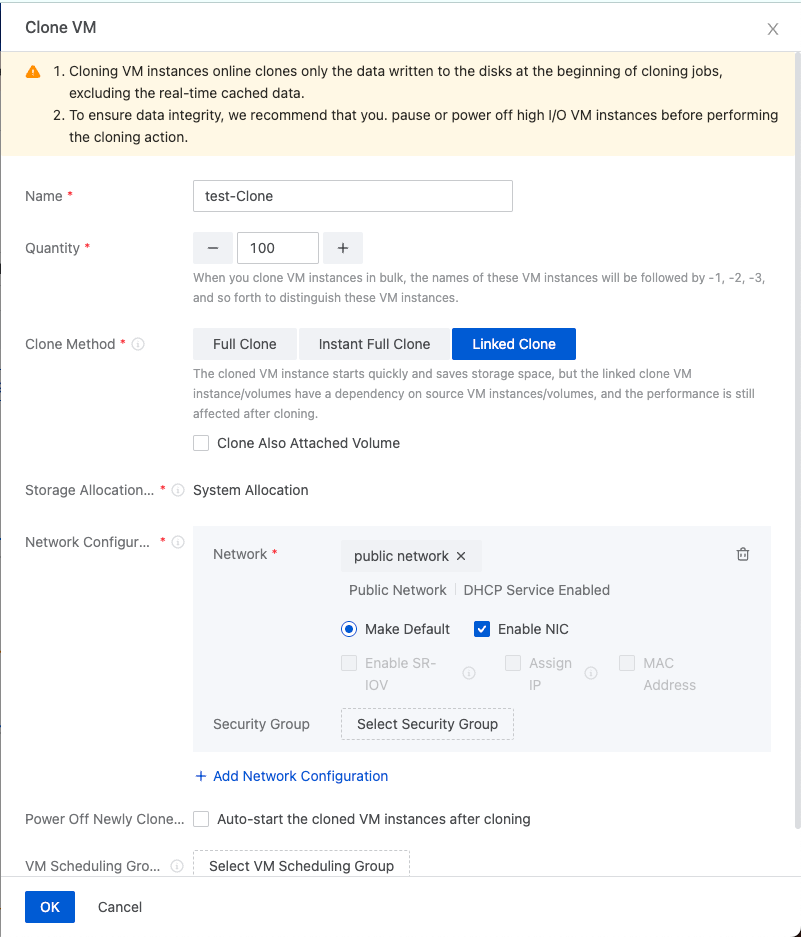
2.CBD Primary Storage: A New High-Performance Storage Option for Critical Business Scenarios
Storage Capability Integration: ZStack Cloud 5.3.20 introduced CBD type primary storage, interfacing with high-performance distributed block storage through the CBD interface, providing high throughput and low latency data read/write capabilities, perfectly suited for database services, real-time data processing, and other core scenarios.
Efficiency and Management Optimization: Supports rapid full cloning of cloud hosts, significantly improving business deployment efficiency; a new MDS node subpage on the details page allows centralized viewing and management of MDS nodes, simplifying operational tasks.
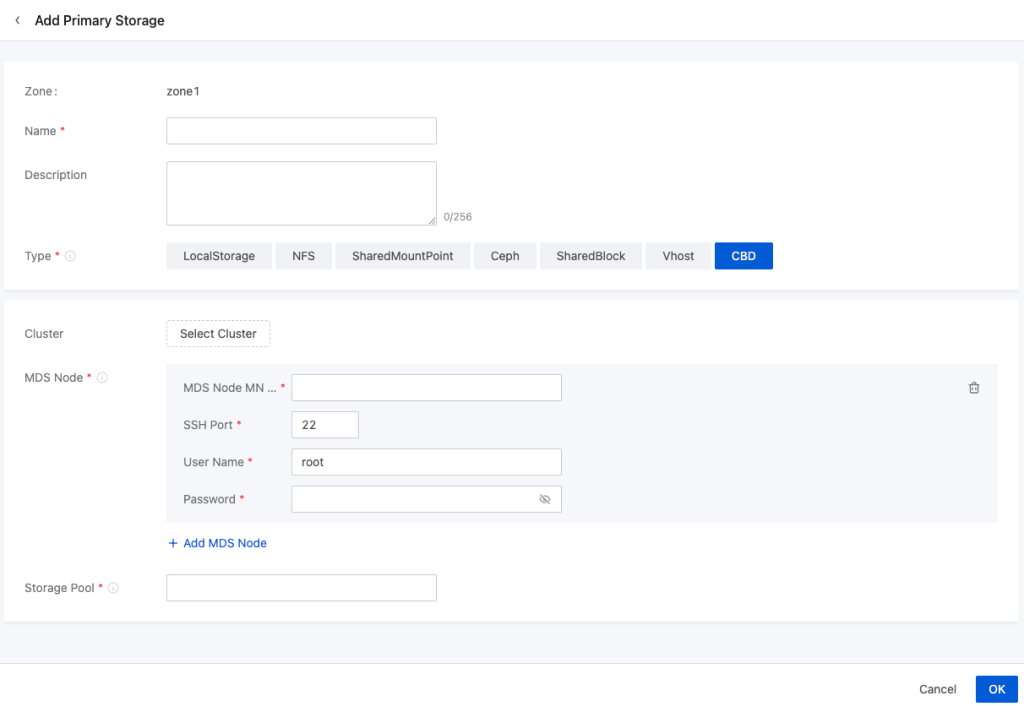
3.SharedBlock Primary Storage: Hot Migration Support to Ensure Uninterrupted Business Operations
ZStack Cloud 5.3.28 introduced the SharedBlock data cloud disk hot migration feature—users can migrate the SharedBlock ordinary data cloud disk loaded on a running cloud host to other similar primary storage, avoiding business downtime and enhancing resource scheduling flexibility.
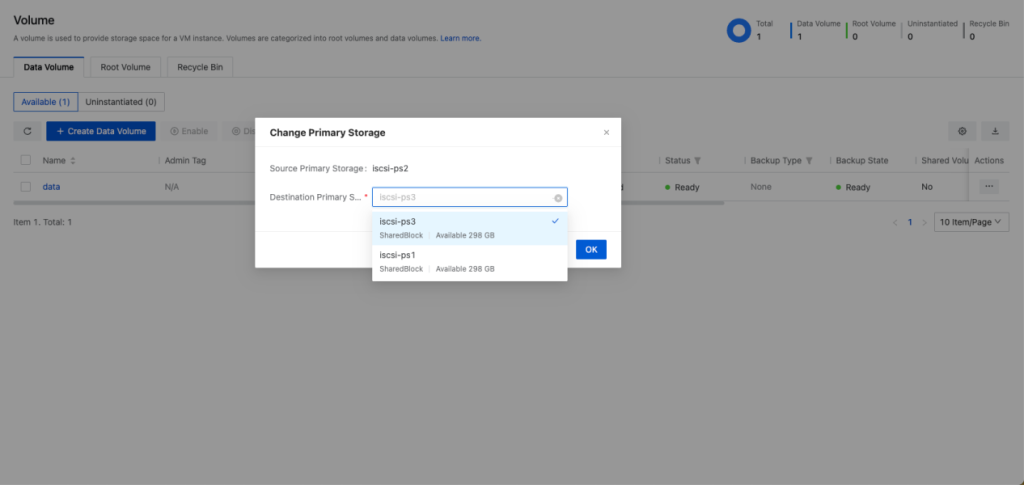
Cloud Networking: High-Performance Architecture Implementation, Comprehensively Enhancing Service CapabilitiesOVS-DPDK
1.OVS-DPDK Network Architecture: A High-Performance Network Foundation to Meet Low-Latency Demands
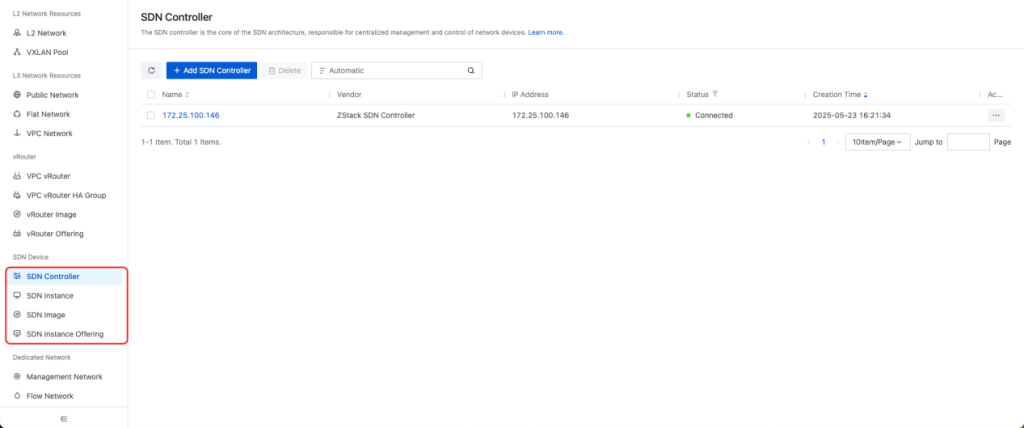
Support for OVS-DPDK Network Architecture: ZStack Cloud 5.3.20 supports the new OVS-DPDK network architecture on the H84R system, allowing users to manage SDN controllers, instances, images, and other resources within the platform and create Layer 2 networks based on the controller, providing cloud hosts with a high-performance, low-latency network environment. This fully meets the needs of high-performance computing (HPC), high-frequency trading (HFT), real-time online gaming, live video streaming, and other low-latency scenarios.
Performance: Benchmark tests in a 25Gb high-performance network card environment show excellent performance in key metrics such as bandwidth and latency. A complete test report and in-depth analysis will be published in future articles.
Bandwidth Data
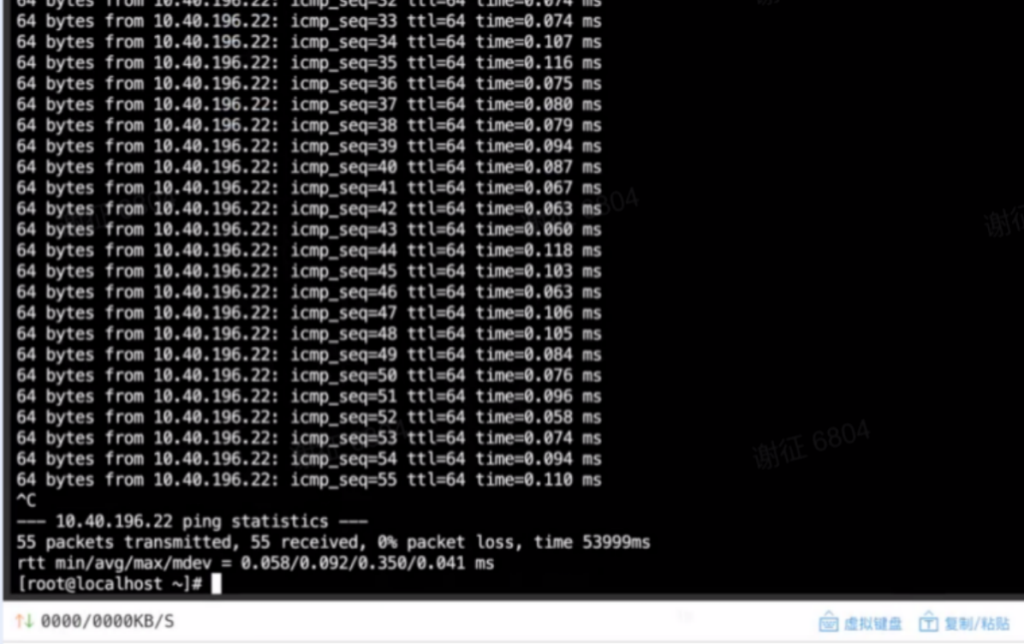
OVS-DPDK Service Capability Expansion: Version 5.3.28 further adapts core network services:
QoS Support: Allows setting bandwidth thresholds for flat network cards to avoid congestion and ensure critical business operations.
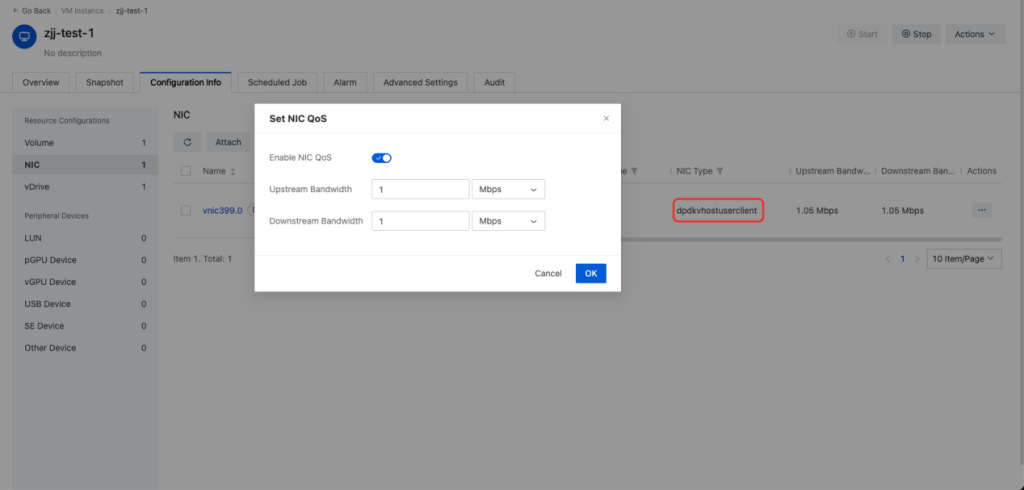
DHCP Support: Automatically assigns IP addresses, improving network deployment efficiency.
OVS-DPDK Security Group Support: Configures inbound/outbound access control policies to enhance network security.
Bond Mode Optimization: Supports three OVS Bond modes—active-backup, load balancing – SLB, and load balancing – TCP—to suit different network load scenarios.
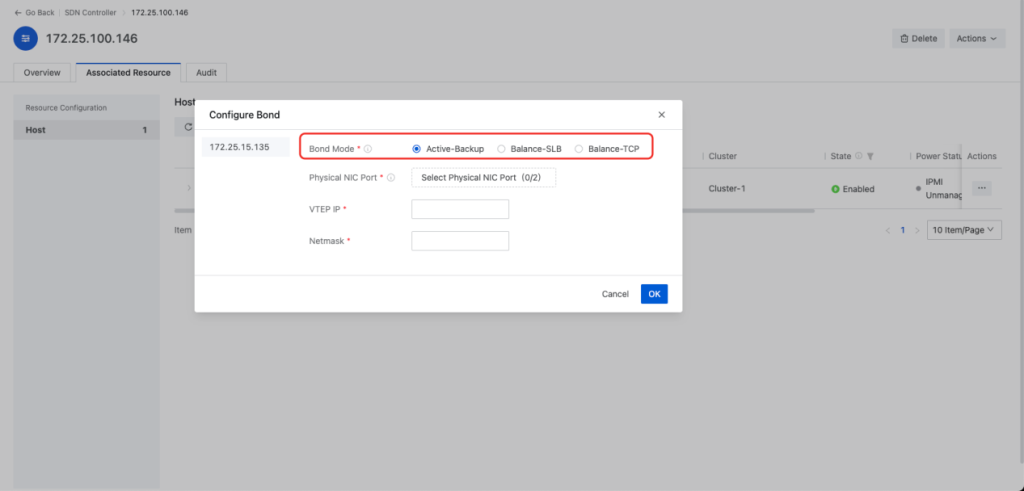
2.Advanced Load Balancer Monitoring: Multi-Dimensional Visualization to Double Operational Efficiency
ZStack Cloud 5.3.28 introduces advanced load balancer monitoring, providing deep traffic insights for enterprise-level businesses:
Traffic Visualization: Line charts display core metrics such as incoming/outgoing traffic and active/concurrent connections in real-time.
Session Statistics: Interactive tables record key data such as request timestamps, response statuses, and traffic consumption, supporting full-link session tracking.
Multi-Dimensional Filtering: Traffic data can be filtered by time, client IP, front-end/back-end IP, and other dimensions for precise tracing of abnormal access.
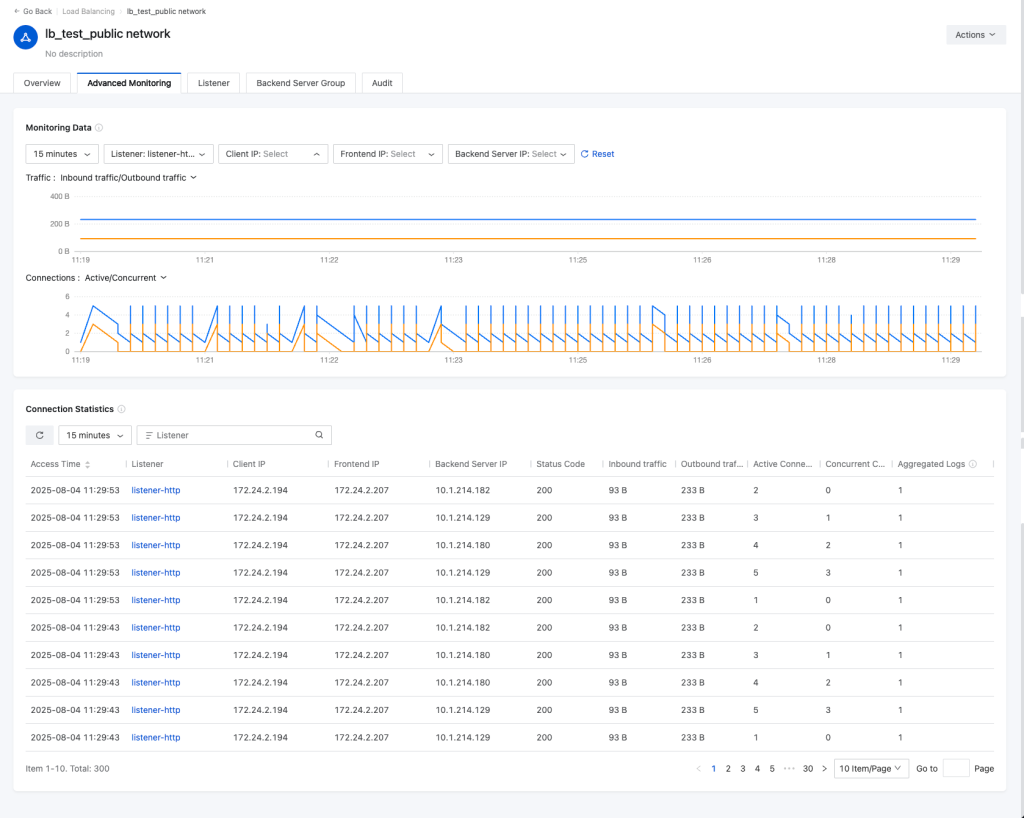
3.Simplified SR-IOV Configuration: Out-of-the-Box, Accelerating Network Deployment
ZStack Cloud 5.3.20 simplifies the SR-IOV configuration process: Removes the “network acceleration mode” option for Layer 2 networks. As long as the physical network card supports SR-IOV and VF resources have been allocated, all Layer 3 networks bound to the card can directly use SR-IOV functionality, reducing the risk of user error and making high-performance network virtualization truly out-of-the-box.
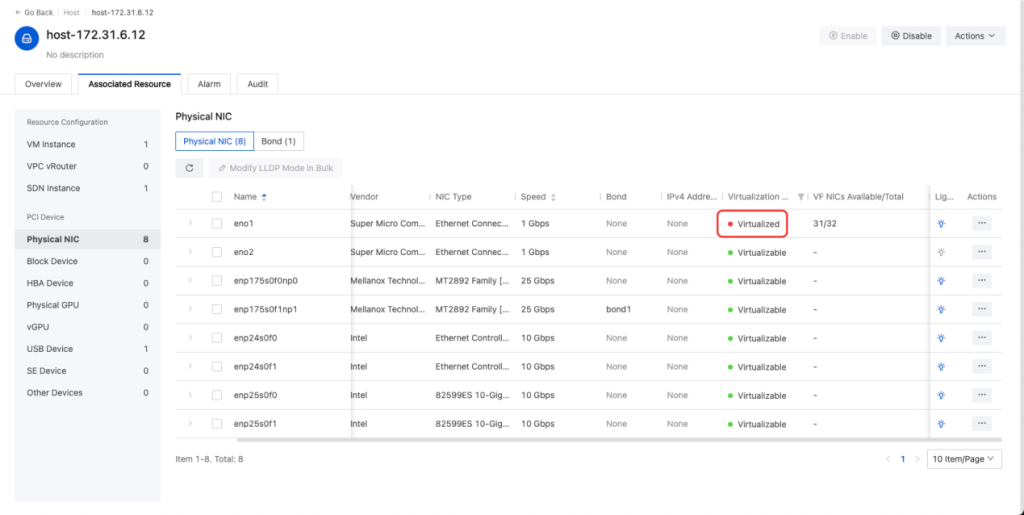
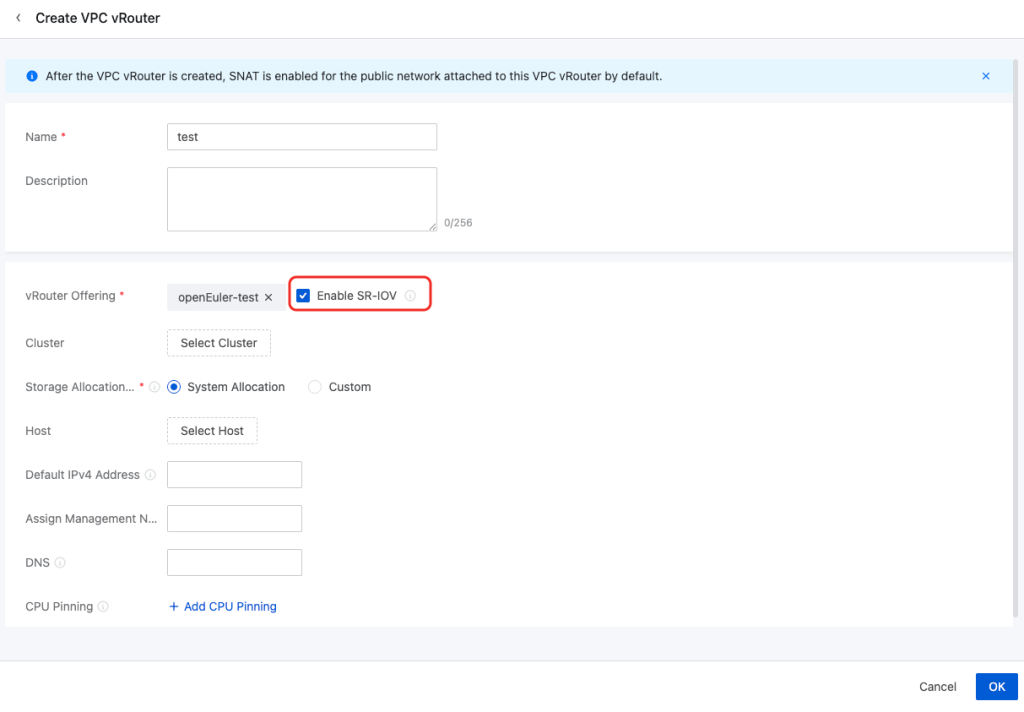
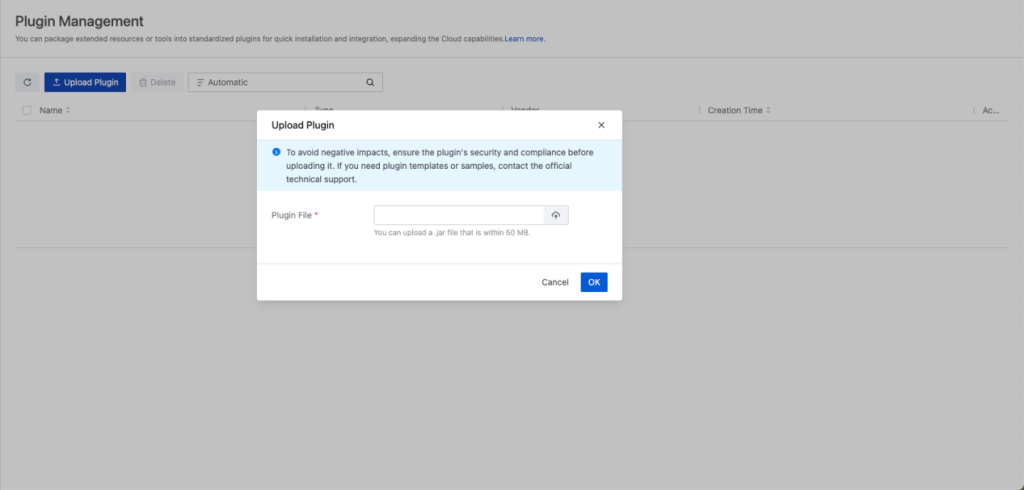
Architectural Upgrade: Plugin Ecosystem, Creating an Agile Cloud Platform
The newly upgraded plugin architecture in ZStack Cloud 5.3.28 supports rapid integration of unified authentication servers and password resource security modules through plugins. The plugin architecture features the following highlights:
Standardized Plugin Engine: Seamlessly compatible with interfaces from all manufacturers, eliminating interface differences through abstract plugin interface specifications, achieving “develop once, adapt to all manufacturers.” Supports hot-pluggable integration: Functional modules can be integrated without coding, automatically registering services after uploading plugins, without needing to restart core services, achieving “zero downtime” business upgrades.
Full Lifecycle Management: The visual plugin management interface (Settings > System and Security > Plugin Management) provides one-click upload/delete plugin functionality, centrally managing all plugins supported by the platform. Supports sandboxed operation, allowing plugins to be deployed in independent processes, ensuring resource isolation for core platform stability, and enabling second-level removal of faulty plugins.
Agile Expansion Capabilities: Provides standard development templates, supporting users in quickly packaging third-party tools, extending resource types without modifying platform source code. Supports on-demand loading, allowing customers to load only the necessary plugins, effectively reducing system resource usage.
Other Important Updates: Operational Optimization and Ecosystem Expansion
Tenant Log Isolation: Supports deploying dedicated log servers (compatible with Syslog, Elasticsearch, Forward, Kafka, Loki) for each tenant project, effectively defending against unauthorized access and data leakage risks.
Application Market Expansion: Newly launched ZStack DTS Database Transmission Service, open-source one-stop system operation and maintenance platform (SysOM), AI model platform, etc., supporting one-click deployment to accelerate enterprise digital transformation.
Automation and Backup: Integrates Terraform and OpenTofu plugins to achieve multi-cloud infrastructure as code (IaC) orchestration and cross-cloud resource automation management; opens CBT (Changed Block Tracking) standardized interfaces to assist backup vendors in quick integration, reducing occupied capacity by 50%.
Conclusion
ZStack Cloud is always driven by user scenario needs. In addition to the aforementioned highlights, it has developed and improved several important features to cover diverse business scenarios, providing customers with a smoother product experience and more efficient business support. In the future, we will continue to strengthen the “simple, robust, elastic, intelligent” cloud foundation, building a cloud computing service matrix with greater scenario penetration, providing solid support and continuous growth momentum for customers’ digital transformation throughout the lifecycle.